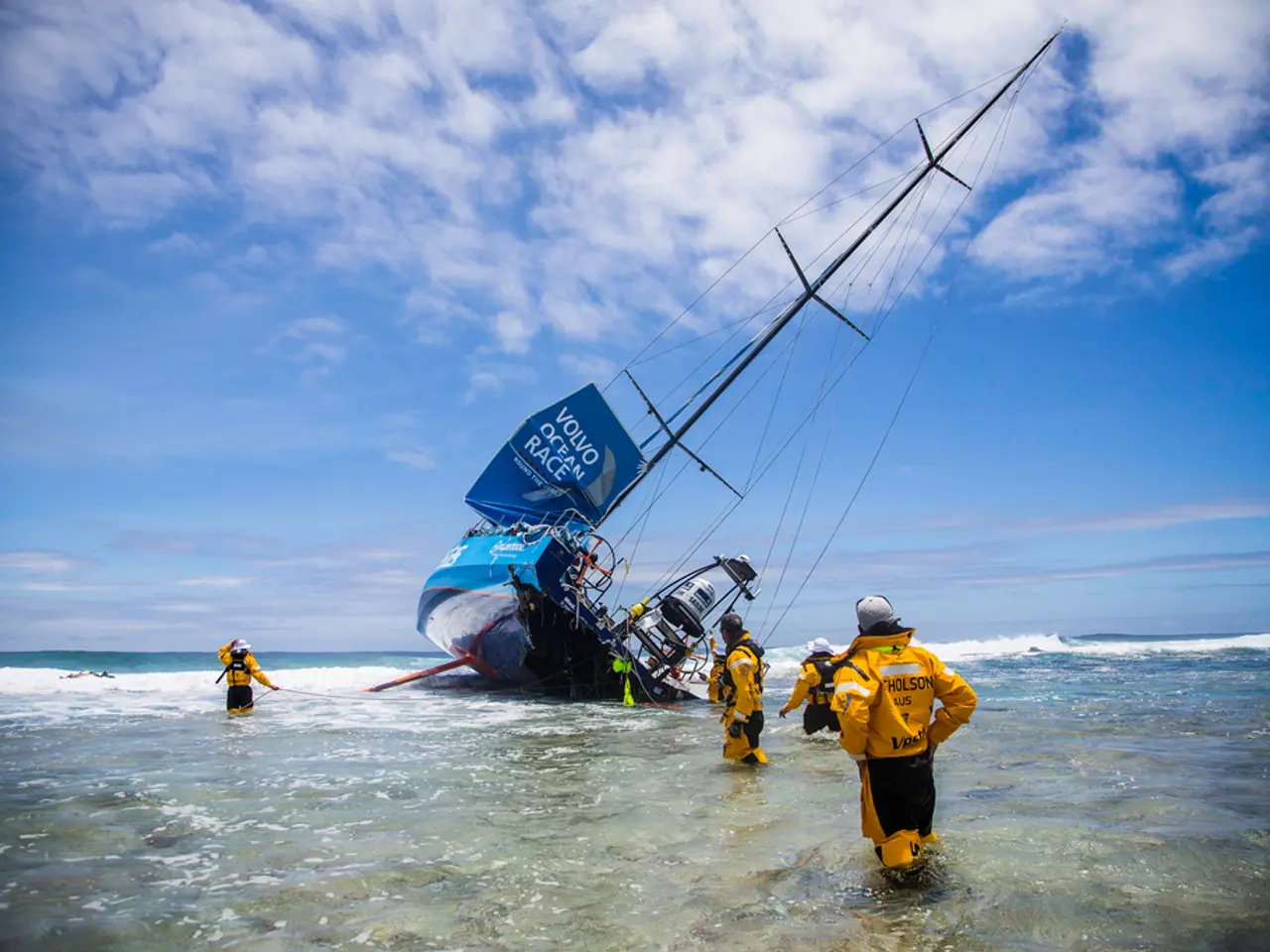Survivors of Near-Drowning Incidents Recount Their Experiences: "Roses floated above me, signaling my own ascent, leaving me paralyzed from the neck down"
In Spain, drowning is a significant public health issue, claiming the lives of around 400 people each year. However, the non-fatal impact of drowning, often marked by a range of after-effects known as sequelae, is less frequently discussed but equally critical.
The profile of a drowning victim in Spain is typically a man over 55 years old, unsupervised on a beach on the coast of Andalusia, Galicia, the Valencian Community, or the Canary Islands. The National ASPAYM Federation and the Lifesaving Group of SEMES emphasise the importance of prevention and awareness campaigns for drowning incidents.
One such survivor is Yolanda Ruiz, a Valencian educator of early childhood education, who became tetraplegic 35 years ago due to a drowning incident. She is one of the 2,000 people who receive emergency care each year due to drowning in Spain.
Survivors of non-fatal drowning often experience a range of sequelae primarily due to hypoxic injury (lack of oxygen) during the drowning event. The most common and serious sequelae include neurological impairments such as cerebral palsy, cognitive deficits, memory loss, and other brain injury-related conditions caused by oxygen deprivation to the brain.
Acute respiratory distress syndrome (ARDS) is another common sequela, which can lead to lung complications such as infections, fibrosis (scarring), collapsed lungs, and potential long-term respiratory dysfunction. Other possible organ damage or failure arising from the initial hypoxic insult to various body systems can also occur.
These health impacts can seriously affect survivors' quality of life, including physical disabilities, cognitive and developmental delays, and chronic respiratory issues, necessitating prolonged medical care and rehabilitation.
The Spanish Society of Rehabilitation and Physical Medicine (SERMEF) highlights that spinal injuries from diving are a significant cause of permanent disabilities. Drowning is often a silent process, and a person who is drowning does not shout or ask for help, instead focusing on breathing.
The Royal Spanish Federation of Lifesaving and Rescue (RFESS) warns that water fun should not lead to negligence, as beaches, pools, rivers, and aquatic spaces can be risky if not approached responsibly. The Lifeguarding Group of SEMES has released an awareness video to promote citizen activism in preventing drowning in any circumstance.
It's crucial to note that the search results did not provide detailed, Spain-specific epidemiological data or studies specifically documenting the long-term sequelae and their impact on survivors' lives in the Spanish healthcare or social context. Further research or local health data would be required for more precise information about how these sequelae affect survivors uniquely in Spain.
Despite these limitations, it's clear that non-fatal drowning is a pressing issue in Spain, with survivors often dealing with significant after-effects that impact their health and daily functioning. By raising awareness and promoting responsible behaviour around water, we can help reduce the number of drowning incidents and improve the quality of life for those who survive.
- In addition to the fatalities, the non-fatal impact of drowning in Spain raises concern, as around 2,000 people receive emergency care each year due to drowning incidents.
- The survivors of non-fatal drowning often grapple with a variety of sequelae, primarily due to hypoxic injury, which can result in neurological impairments.
- Cerebral palsy, cognitive deficits, memory loss, and other brain-related injuries are some of the neurological impairments survivors may face due to oxygen deprivation during the drowning event.
- Acute respiratory distress syndrome (ARDS) is another common sequela, which can lead to long-term respiratory issues such as fibrosis, collapsed lungs, and infections.
- Spinal injuries from diving are a significant cause of permanent disabilities, underlining the importance of education and caution in and near water bodies.
- The search results showed no detailed, Spain-specific data on the long-term sequelae and their impact on survivors' lives in the Spanish healthcare or social context, necessitating further research.
- Health impacts from non-fatal drowning can cause physical disabilities, cognitive and developmental delays, and chronic respiratory issues, necessitating prolonged medical care and rehabilitation.
- The National ASPAYM Federation and the Lifesaving Group of SEMES advocate for prevention and awareness campaigns to minimize drowning incidents.
- Water fun must not lead to negligence, as beaches, pools, rivers, and aquatic spaces can be risky if not approached responsibly, warns the Royal Spanish Federation of Lifesaving and Rescue (RFESS).
- Citizen activism plays a crucial role in preventing drowning, as demonstrated by the awareness video released by the Lifeguarding Group of SEMES.
- Health and wellness, including fitness and exercise, skin care, mental health, men's health, women's health, cardiovascular health, neurological disorders, and eye and hearing health, are all affected by the after-effects of drowning.
- Promoting responsible behaviour around water and raising awareness can help reduce the number of drowning incidents and improve the quality of life for those who survive, addressing issues related to workplace-wellness, aging, chronic diseases, cancer, respiratory conditions, digestive health, autoimmune disorders, and sports-related injuries.




